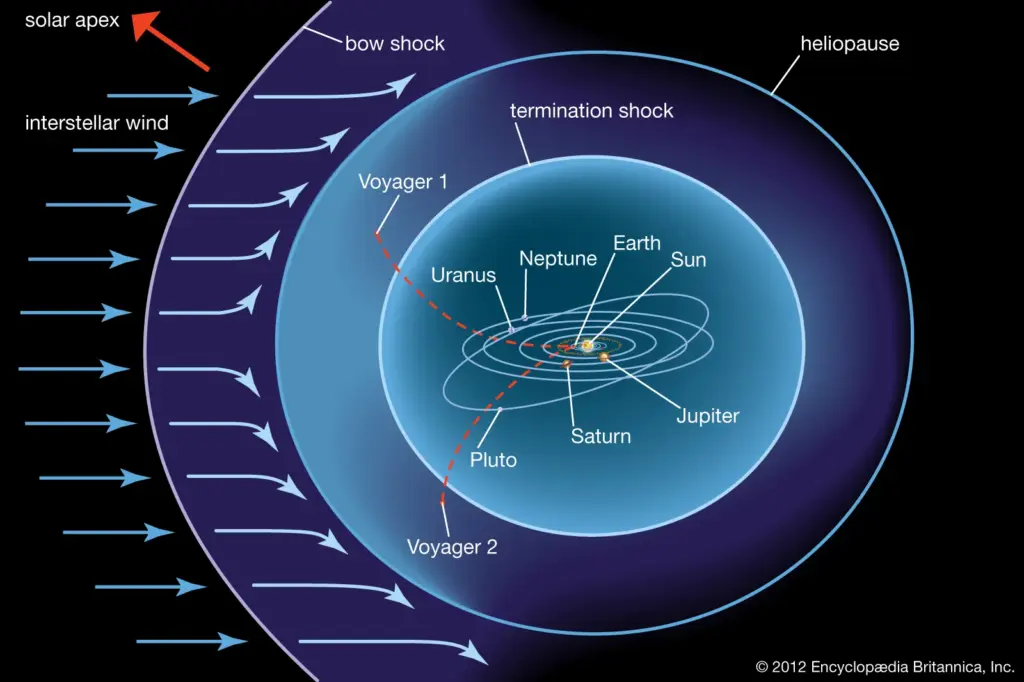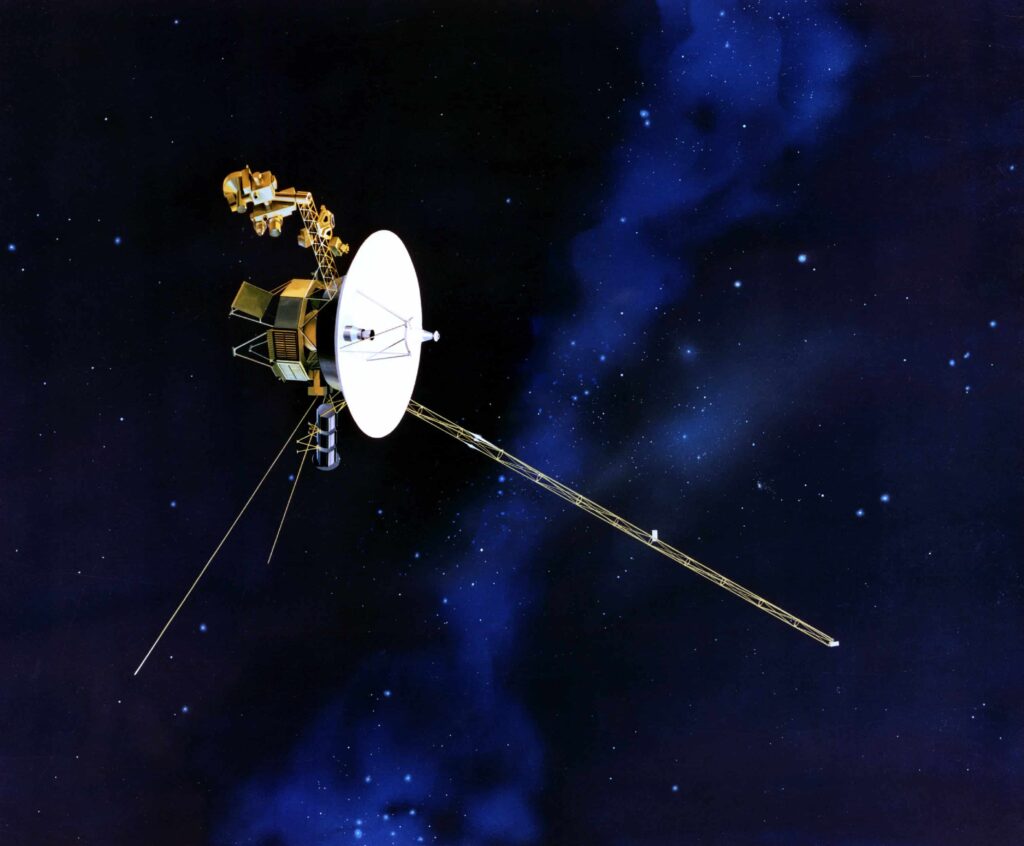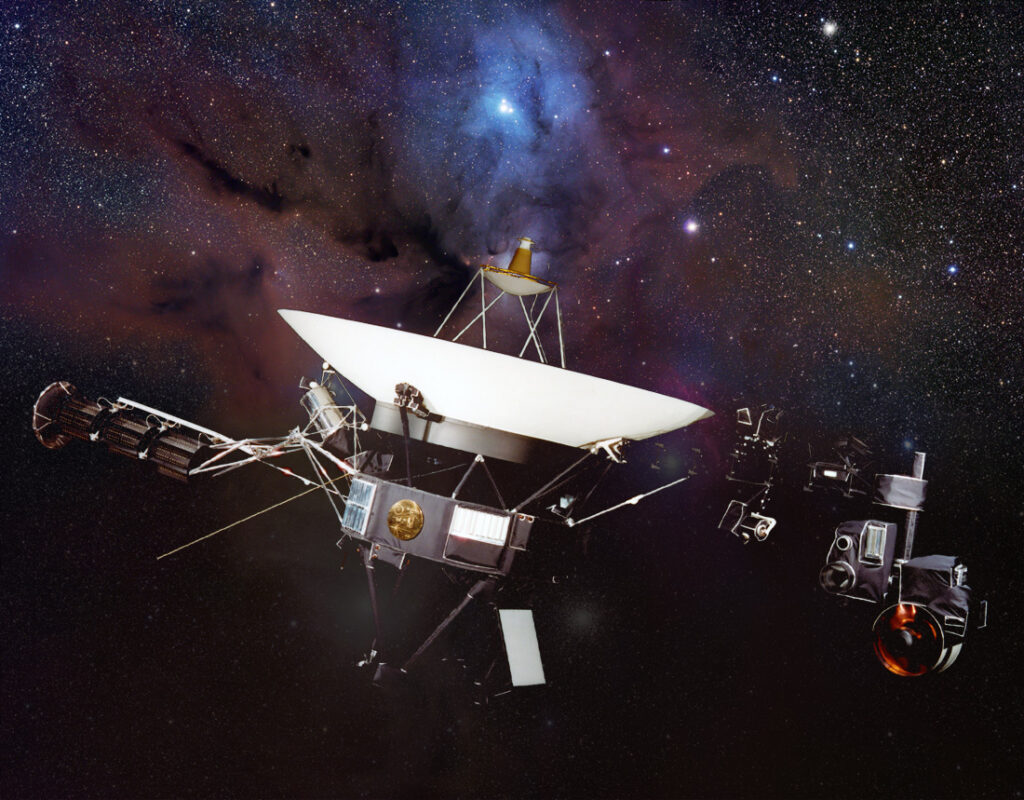Voyager 1 Sends Back Shocking Data: “Sometimes the biggest discoveries don’t come from the latest tech—but from a 70s-era spacecraft that just won’t quit.” That’s exactly what happened with Voyager 1, the iconic spacecraft NASA launched in 1977. After traveling over 24 billion kilometers (15 billion miles) from Earth, Voyager 1 has reached the edge of our solar system—what scientists call the heliopause—and sent back data that’s turning long-held assumptions about space on their head.
Here’s what makes this so wild: Voyager 1 detected a superheated boundary region, nicknamed a “wall of fire,” right where the solar wind dies out and interstellar space begins. Alongside that? It found magnetic field behavior that doesn’t match decades of space physics models. This isn’t just a small detail—it’s a potential game-changer for everything from space weather forecasting to interstellar mission planning.
Voyager 1 Sends Back Shocking Data
The Voyager 1 spacecraft continues to redefine our understanding of space—even nearly 50 years after its launch. Its latest discovery—a fiery boundary and an aligned magnetic handshake with interstellar space—doesn’t just challenge science textbooks. It reminds us that exploration is still unfolding, right at the edge of what we thought we knew. What started as a mission to visit a few planets is now a journey redefining cosmic borders.

| Topic | Details |
|---|---|
| Discovery | Voyager 1 found a superheated boundary zone at the heliopause nearing 30,000°C |
| Location | ~24 billion km (≈160 AU) from Earth in interstellar space |
| Launched | September 5, 1977 |
| Current Speed | Traveling at 61,000 km/h (≈38,000 mph) |
| Magnetic Field Surprise | Fields on both sides of the heliopause are nearly aligned |
| Power Source | RTG (Plutonium-238) still operational; power fading gradually |
| Official Website | Visit NASA’s Voyager Mission |
A Legendary Mission Still Making History
Voyager 1 wasn’t supposed to last this long. When it launched in the late ’70s, its mission was to explore Jupiter and Saturn—and that it did brilliantly, capturing some of the most iconic images and data of those planets ever seen. But rather than calling it quits, NASA scientists charted a new course: send it out of the solar system.
Over the next few decades, Voyager 1 traveled deeper and deeper into the void, finally crossing into interstellar space in 2012, becoming the first human-made object to do so. Incredibly, it’s still sending back useful scientific data despite using technology that predates smartphones, digital cameras, and the internet.
What Is the Heliopause—and Why Should You Care?
The heliopause is where the Sun’s influence officially ends. The Sun constantly emits solar wind, a stream of charged particles that forms a protective bubble around the solar system called the heliosphere. The outer edge of that bubble—the heliopause—is where the solar wind loses its strength and gives way to the interstellar medium.
Scientists always assumed that the heliopause would act like a distinct boundary, with sharp changes in temperature, density, and magnetic fields. But what Voyager 1 is finding suggests it’s more like a gradual, active transition zone—a sort of cosmic borderland filled with surprises.

The “Wall of Fire”: What Voyager Really Found
In one of the most surprising findings to date, Voyager 1 detected an intense zone of superheated particles as it passed into interstellar space. This narrow region, unofficially dubbed the “wall of fire” by some in the scientific community, features temperatures reaching an estimated 30,000 degrees Celsius (54,000 degrees Fahrenheit)—much hotter than anyone expected for such a thin part of space.
Here’s what makes it stranger: despite those scorching temperatures, the particle density is extremely low. So while it’s technically hot, there’s not enough matter to transfer heat like it would on Earth. It’s similar to sticking your hand in a high-temperature oven with no air—hot, but not likely to burn because there’s so little stuff to conduct heat.
This temperature spike happens due to the compression of solar wind particles as they slow down and collide with interstellar gases. The result? Energy builds up in a narrow zone and causes an unexpected thermal surge—a phenomenon no model had predicted this clearly.
Magnetic Fields Defy Expectations
Equally shocking was what Voyager 1 found about magnetic fields in and around the heliopause.
Scientists had long predicted a stark contrast between the solar magnetic field and the interstellar magnetic field. After all, they originate from entirely different sources—the Sun and the galaxy at large. But Voyager 1’s readings show a remarkable degree of alignment between the two fields, meaning the transition from one to the other is far smoother than previously thought.
Why is this a big deal? Because it:
- Challenges long-standing theories about how solar and interstellar environments interact.
- Changes how we understand magnetic field propagation, especially regarding cosmic rays and space radiation.
- May influence how future deep-space missions are shielded and designed.
It also raises new questions: Could other star systems have similar magnetic alignments? Does this smooth transition zone exist around other stars too? These are now open fields of research thanks to Voyager’s data.
Voyager 1 Sends Back Shocking Data: How Voyager 1 Is Still Communicating?
Voyager 1 is powered by a nuclear battery, specifically Plutonium-238 RTGs (Radioisotope Thermoelectric Generators). These slowly decay over time, providing diminishing but reliable electrical power.
In late 2023, the spacecraft experienced a critical glitch that caused it to send back garbled data. But NASA engineers pulled off a rare fix: they rerouted data around damaged memory and activated backup code that hadn’t been used since 2004. That’s like booting up a 20-year-old operating system—and it worked.
With only a few working instruments and limited bandwidth, Voyager’s team is carefully prioritizing what data gets sent. It can take up to 22 hours for a signal to reach Earth—and just as long for us to send one back.

Future Implications for Science and Humanity
The data Voyager 1 sends home isn’t just cool trivia—it’s reshaping how we view our place in the universe. Here are a few ways this discovery could have long-term effects:
1. Space Weather Forecasting
Understanding how the Sun’s magnetic field interacts with interstellar space helps us build better models for solar storms and their potential impacts on:
- Satellites
- Power grids
- Astronaut health
2. Designing Future Missions
New spacecraft aiming to explore beyond the heliopause (such as proposed Interstellar Probe concepts) will need to account for the thermal and magnetic properties of this boundary. That includes new shielding designs, power management strategies, and radiation protection.
3. Revising Galactic Models
This data adds a new layer to how scientists model our galactic neighborhood. Magnetic fields may influence how cosmic rays travel, how molecular clouds form, and even how star systems evolve.
Voyager 1 by the Numbers
- Distance from Earth (2025): ≈ 24 billion km (≈ 160 AU)
- Transmission Time: ≈ 22 hours each way
- Speed: ≈ 61,000 km/h
- Launched: September 5, 1977
- Entered Interstellar Space: August 2012
- Estimated Power Cutoff: 2026–2027
What’s Next for Voyager 1?
Despite being over four decades old, Voyager 1 is expected to keep transmitting until at least 2026, depending on how much power remains. After that, it will go silent—but its journey will continue.
Even after power fails, Voyager 1 will drift on through the galaxy. In around 40,000 years, it’s expected to pass within 1.6 light-years of another star system, AC +79 3888. It won’t send signals, but it’ll carry the Golden Record, a time capsule of Earth’s sounds and images meant for any intelligent life that might one day find it.

Nature’s Petrifying Secret: Tanzania’s Lake That Mummifies Animals in Its Deadly Waters
Confirmed: Black Hole Detected Spinning at Blistering 80% of Its Max Speed—What It Means for Physics











